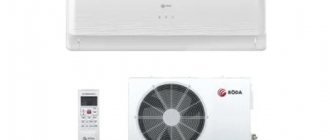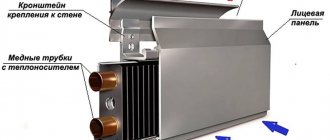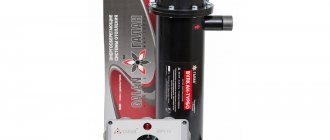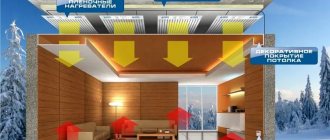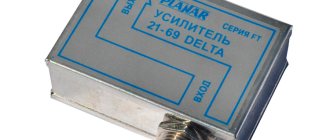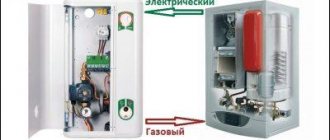Houses made of wood are actually the first artificial housing created by man. There is a gap of thousands of years between the first tree trunk huts and stone structures. There is something primitive, real and native in wooden houses: perhaps this is why their popularity not only does not fade, but is steadily growing. Naturalness, environmental friendliness, good thermal insulation properties and unsurpassed aesthetics are the main advantages of such buildings. Are there enough of them to call such housing ideal? Quite - if the installed heating of a wooden house is efficient and safe.
- 2 Gas heating
- 3 Liquid fuel - an alternative to “blue”
- 4 Electricity: simple, convenient, but unprofitable?
- 5 Solid fuel boiler: a practical solution
- 6 Stove - never losing its relevance
- 7 Safety, accessibility, comfort
Other types of heating
Sometimes water heating is combined with electric heating, which is a good heating option in the absence of gas.
Electric heating is often associated with heating a room with convectors. This option is good for small rooms that are rarely used - bathhouses or summer cottages. Convectors for large rooms are quite expensive.
Warm floors are also popular, but installing them in a wooden house is very problematic - you will have to very carefully draw up a house project in order to do everything right. Moreover, it is very difficult to do this on your own.
Video:
The advantages of a heated floor system include silent operation and high accuracy of transmitted temperature.
The installation scheme for a heated floor is quite simple - the pipes are laid on heat-insulating material.
The distance from the beginning of the pipe to the wall is about 10 cm, the second pipe is laid 20 cm from the first.
Then the pipes are laid in the opposite direction, with a distance of 20 cm between them
Pipes for heated floors can be positioned as you like - in a spiral or around the perimeter, it doesn’t matter
Stove heating in a wooden house is still popular. Only specialists can fold it correctly.
However, people choose just such a heater for their dacha, because many know how to handle it, its features and how to heat a room with its help. Many people are not even bothered by the prospect of frequently adding logs to the fire and regularly checking the flame.
For a wooden country house, this type is better than heating with electricity, convectors or gas. The stove is even superior to water heating in some ways - there is no risk of damaging the wood.
Video:
Principles for calculating battery power
To choose heating radiators for a country or private house, you need to perform calculations based on the fact that to heat one square meter. m of living space requires approximately 95–125 kW. To warm up a room with average parameters (one window, one door, ceiling height up to 3 meters), it is necessary to heat the coolant to 70 °C.
Article on the topic: Book on how to build a wooden house
If actual parameters differ from those indicated, adjustments must be made. For example, with a ceiling height of more than 3 meters, it is necessary to increase the calculated power of the batteries as many times as the actual height exceeds the conditional one. For low ceilings, recalculation is carried out in the opposite direction.
A decrease in coolant temperature for every 10 °C relative to the specified average level forces a corresponding increase in the design power of heating devices by 15–20%. If the room is corner and has two windows, the average calculated power of the batteries is increased by 1.5 times.
The heat transfer of radiators largely depends on their connection diagram. The average calculation is based on the fact that the heated coolant is supplied to the upper side inlet, and the return is connected to the lower inlet diagonally. Other connection options are less efficient and reduce the heat dissipation of batteries by 5–10%.
Note! The number of sections for radiator models of this type should not exceed 10 pieces - further expansion will not help increase power, since the coolant will not be able to fully warm up such a battery.
Comparison of thermal power of different types of batteries
Calculating radiator parameters
Particular care should be taken when choosing panel and tubular batteries. Manufacturers include in their product line models of the same power, but with different geometric parameters. When choosing, take into account the features of the installation location - the height from the floor to the window sill, the length of the wall in an elongated room, etc.
Homeowners choosing heating devices and wanting to purchase the best options at a reasonable price opt for steel or aluminum models. The cost of the most reliable, imported bimetallic radiator is prohibitively high, and cast iron batteries have many serious disadvantages. According to statistics, those who are thinking about which radiators to choose for a private home or country house choose aluminum sectional or steel panel models based on the ratio of price and practicality.
Video with tips for choosing heating radiators:
Electric heating system
It is believed that electric heating of a private home is the most environmentally friendly method. But electric heating is a very expensive option. The use of such a system will subsequently be expensive, regardless of what you install for yourself - a heated floor system or an electric boiler, or limit yourself to convectors.
When using electricity, you will need to carefully insulate the house, otherwise the street will be heated. But electric heating of a private home can be made fully automated, and its operation will bring a lot of pleasure, in addition to ease of use.
The most popular today are infrared heaters. They consume less electricity and are extremely simple to operate. They do not heat the air in the room, as with a traditional heating system, but all solid objects falling within the radiation radius.
Why electricity
Electric heating differs from classic water-stove and gas systems by being more economical and practical. We will leave the first aspect for discussion below, and describe the operational advantages here:
Electric heating is not only silent, but also environmentally friendly. It is transported safer than gas and does not emit harmful substances at all, both into the atmosphere and indoors. In the absence of waste, the need for exhaust chimneys and traction structures disappears. Heating using coal or wood is not at all comparable to electric systems. Heating with electricity does not require large one-time costs. You can make a comparison using gas as an example: to connect a house you must purchase equipment for each room, install communications, a boiler, and connect it to a common pipeline. Moreover, all this must be done together, since it is impossible to postpone connecting any part of the house to the system. And the electrical method allows you to organize sequential installation: first, the most important parts of the house are connected, and then, as funds accumulate, peripheral parts are connected. Thanks to the possibility of using a multi-tariff meter in a private house or apartment, as well as the constant development of technology in this area, electric heating is already the most economical among analogues
You should not focus on the high price of the equipment - it quickly pays for itself due to low energy consumption. Almost every method of organizing electric heating allows you to install it yourself, without many additional tools.
Of course, the use of electrical systems for heating cannot be called ideal. The work of high-quality heating of each home requires taking into account many features. In some regions, the cost of electricity can be so high that gas cannot be avoided. In old apartment buildings, it is difficult to switch to electric heating for two reasons: it is very difficult to disconnect from the central highway, and the electrical network will have to be reconnected, taking into account powerful equipment.
Despite this, the overall picture tips the scales towards electricity. For premises where there is no gas or where there is no possibility of supplying it, it is a real salvation.
Types of heating systems
First of all, the house can be heated using an autonomous structure with forced or gravitational (natural) coolant circulation. Each of these methods has its own advantages and disadvantages. In addition, there are situations when it is better to use one or another variety.
Advantages and disadvantages of natural circulation
Gravity pumping is entirely based on the laws of physics. More precisely, the coolant moves through the pipeline due to the difference in weight between cooled and heated water.
A hot liquid has a much larger volume, but much less mass. Accordingly, it rises up the riser, moves further through pipes that are laid at an angle, and is pumped into heating radiators, where it is cooled.
Before making a final choice in favor of a certain type of fluid circulation in the system, you need to consider the pros and cons of each heating option
The list of advantages of such a solution should include ease of installation. A system with natural circulation lasts much longer and is stable. At the same time, the absence of a pump allows you to get rid of excess noise and ensure independence from the availability of electricity.
As for the disadvantages, this kind of solution can only be used when heating a small house. In addition, the system requires laying large-diameter pipes, which significantly increases the cost of organizing a home heating system.
When choosing natural circulation, you need to take a responsible approach to installation - errors will lead to a serious decrease in the speed of pumping the coolant
Distinctive features of pumping systems
To make water move faster through the pipes, a circulation pump is installed into the heating system. With its help, you can move the media with virtually no loss of temperature. As a result, a wooden building warms up much faster, which saves a considerable amount of fuel.
The main advantage of forced circulation is that the area of the heated house can be practically unlimited. At the same time, the owner is given the opportunity to control the amount of heat and the speed of the pump. The disadvantages of this solution are the dependence of the system on the availability of electricity and the high noise level of the equipment.
When installing a heating pump, you can use pipes of small diameter. This allows you to save on the purchase of plumbing fixtures
This is interesting: Thermal imager for construction - how to conduct a thermal imager inspection at home
Criteria for choosing a heat generator
There is simply a huge selection on the market - domestic and foreign manufacturers offer a wide variety of models. From such an assortment, a buyer with any income level will be able to choose something for himself.
In order not to make a mistake when buying a boiler, you need to check what type of fuel is most available in the region. It is also important to correctly calculate the power of the equipment.
Advantages of gas units
The vast majority of owners of wooden houses opt for gas equipment.
The popularity of wall-mounted and floor-standing gas boilers is due to the fact that such fuel is one of the cheapest in many countries. In addition, with its help you can organize a completely autonomous and maintenance-free heating system.
The list of advantages of gas boilers needs to be supplemented:
- High efficiency . Even a low-power device generates more heat than its counterparts running on other types of fuel.
- Ease of operation . No need to worry about where the fuel will be stored. At the same time, using such equipment is easy - you only need to set it up once.
- Durability . A high-quality gas unit will last at least 15 years.
The main disadvantage is the need to obtain special permission to install it. All other disadvantages are completely offset by advantages.
If you need to heat a large house with an area of more than 100 m2, then it is better to refuse a gas boiler. In this case, it will be an economically unprofitable solution
Diesel component in the system
Diesel-powered equipment has become increasingly popular over the past few years. First of all, liquid fuel boilers are cheap to maintain and easy to install.
At the same time, there is no need to organize a complex chimney design - many models run on light heating oil. The only thing required is to organize the pipe outlet in the form of a sandwich. It has a special turbine that pushes out air.
If you have decided to install a diesel boiler, you need to understand that this heating method will be expensive. After all, the efficiency of this equipment varies from 75 to 85%, which is a rather low figure.
Also, a diesel-powered unit requires constant monitoring. If it is left for at least a week, it will lead to problems. Indeed, due to the low quality of fuel, the equipment may stop. As a result, the water in the pipes will freeze and burst.
Even despite all the advantages of a diesel device, it should only be installed if this is the only available way to organize a heating system
Solid fuel boiler
This type of equipment is as popular as gas equipment. Great demand is due to the efficiency and environmental friendliness of solid fuel boilers. After all, such a device is the cheapest device to operate. At the same time, it burns renewable fuel and is highly energy efficient.
The market offers an impressive selection of solid fuel boilers. Savings in this matter are not always justified - if you decide to buy the cheapest model, you need to be prepared for the appearance of soot, soot and come to terms with the need for frequent cleaning.
The only disadvantage of solid fuel boilers is the need to allocate space for storing fuel, which requires quite a lot for its operation
Electric heat generator
Equipment that uses current in its operation is the only solution for those regions where centralized communication systems are not installed. Most often it is used as an additional option.
Today, manufacturers offer a wide range of electric boilers. Models with power from 6 to 30 kW are available on the market. Such a wide range of performance allows you to order the device for a wooden house of any size.
Advantages of the equipment:
- small dimensions;
- operational safety;
- complete autonomy;
- cheapness;
- Efficiency approaching 100%.
But keep in mind that electricity is the most expensive energy carrier. Therefore, even despite the low cost of the unit, operating such a system will be expensive.
Electric boilers are completely safe for a wooden house. But to avoid problems, you need to install a meter and select a cable with a calculation of 8 amperes per 1 mm2 of its cross-section
Power calculation rules
To determine the optimal performance of the boiler, it is not at all necessary to seek help from a specialist. To do this, you only need to determine the amount of heat loss. Knowing this value, it must be multiplied by the area of the house and the resulting number will be the required power.
If the building is not insulated in any way, then heating one square meter will require from 130 to 200 W. For buildings with old windows and a facade that is covered with material that does not allow cold to pass through, the optimal value will be 90-120 W/m2.
As for houses with good thermal insulation of attic and basement floors, plastic double-glazed windows, insulated doorways, properly arranged air exchange, then 50-80 W/m2 will be enough to heat them.
Aluminum heating radiators
Aluminum radiators appeared on the market relatively recently and have become popular due to their appearance. However, in addition to their beautiful appearance, they have a lot of limitations, mainly related to their characteristics. Don't install them without thinking.
Aluminum radiators have high power and quickly heat up the room, spending much less coolant than, for example, cast iron ones. Like steel, aluminum radiators fit perfectly into any interior.
Due to its chemical properties, aluminum is resistant to alkaline environments. Therefore, when installing aluminum radiators in your home, be prepared for the fact that you will have to constantly monitor the quality and pH of the coolant. The pH should be from 7 to 8, and even drinking water does not always have such indicators.
There are other nuances when installing aluminum radiators, so it is better to entrust their installation to professionals.
A lot is not a little
A common mistake homeowners make is selecting the size of heat exchangers according to the width of the window opening.
Feel free to leave free space by installing the required number of radiator links according to power calculations.
If you overdo it with the number of sections, you will get dry air, stuffiness or drafts from constantly open windows.
Important ! Do not install one unit of many links in a room: long structures take longer and heat up unevenly. It makes more sense to connect two sets with fewer links.
Saving on radiator sections also negatively affects the microclimate of residential premises. The cold in the rooms will force you to add firewood to the firebox or increase the supply of liquid fuel to the boiler. Operating a “water heater” at peak loads will reduce its service life and lead to excessive consumption of fuel and money. Maintain balance when choosing radiators.
Heat supply system (heat supply)
The first thing you need to pay attention to when selecting is the type of heating supply to the house. The following thermal schemes are possible:
The following thermal schemes are possible:
- From a centralized heat source - if you do not plan to travel far outside the city or are building within a cottage community, then you can use the existing heating network of a thermal power plant or boiler house, which provides heat to nearby houses.
- From a local heat source (autonomous heat supply) – heat supply comes from our own boiler house. This method is used if the heating network pipelines are located far away.
The main pros and cons of heat supply schemes.
| Heat supply | Advantages | Flaws |
| Centralized | No need for a boiler room (no costs for a boiler, pump, water heater), environmental friendliness | Dependence on the heat source, costs of laying the heating main |
| Autonomous | Switching on, switching off and regulating the system at will, independence from the seasonal operation of the thermal power plant/boiler house | You need a boiler room (all equipment in the boiler room), a chimney, a fuel warehouse, emissions into the atmosphere |
I talk in more detail about heat supply systems in the video below.
Choosing a coolant
Qair = cm (tв – tн), where:
- Qair – required amount of heat for ventilation, W;
- m – amount of air by mass, defined as the internal volume of the building multiplied by the density of the air mixture, kg;
- (tв – tн) – as in the previous formula;
- с – heat capacity of air masses, is taken equal to 0.28 W / (kg ºС).
To determine the heat demand for the entire building, it remains to add the value of QTP for the house as a whole with the value of Qair. The boiler power is taken with a reserve for the optimal operating mode, that is, with a coefficient of 1.3. Here you need to take into account an important point: if you plan to use a heat generator not only for heating, but also for heating water for domestic hot water supply, then the power reserve must be increased. The boiler must operate effectively in 2 directions at once, and therefore the safety factor must be taken at least 1.5.
Types of heating of wooden houses
To keep a log house cool in summer and warm and cozy in winter, it is important to choose the right heating options based on modern heating systems
Electric heating
Heating a wooden house using electric heating guarantees residents ease of control of appliances and the absence of harmful emissions. In addition, there is no need to build a separate boiler room and chimney.
The electrical system has virtually no shortcomings, but it can be affected by external factors in the form of constantly increasing resource costs and imperfect operation of electrical networks with frequent voltage drops. To protect yourself from such problems, you can stock up on a generator, but in this case the issue of saving becomes moot.
If electric water heating is used, the risk lies in the coolant, which can leak or freeze if the equipment is not used correctly.
Electric heating is provided by:
- heaters (mounted, floor, built-in - such as underfloor heating);
- radiators equipped with individual heating elements;
- radiator heating circuit, the “heart” of which is considered to be a heating electric boiler.
Gas heating
Gas heating in a wooden house is an easy-to-maintain and fairly effective method that provides high efficiency, but at the same time requires increased attention to safety precautions. This is especially true for wooden structures in which it is planned to install a gas boiler.
In addition, not all suburban settlements are supplied with gas, which is also a problem that can be solved by installing a special container on the site for storing imported gas - a gas holder or purchasing cylinders, but this will significantly increase costs.
Solid fuel
Solid fuel equipment is considered the best option for heating those houses that do not have access to a gas pipeline and where there is questionable operation of electrical networks.
Such heating is effective and less expensive than an electric unit, and is also attractive due to the low price of the equipment and the ability to install all the elements yourself. Modern models of solid fuel boilers include components and parts that improve their efficiency: for example, an automatic machine for dosed supply of coal into the boiler.
For normal operation of the unit, it must be installed on the ground floor or in a specially built boiler room.
The raw materials for heating this type of boiler are coal, peat, firewood, sawdust or pellets. The device becomes very hot during operation, which increases the risk of fire.
To ensure safety, it is important that the boiler room is lined with non-combustible material. In addition, it is necessary to take care of the premises intended for storing raw materials
Pechnoe
Stove heating in a wooden house provides warmth and comfort. The most commonly used stoves are the Swedish type, which combine not only heat transfer functions, but are also equipped with a hob and oven. If desired, such a stove is complemented with a fireplace and sleeping places are arranged against its wall.
The disadvantage of stove heating is the likelihood of poisoning by combustion or ignition products. In addition, the stove can heat a house with an area of no more than 100 square meters using wood or coal. m.
Liquid fuel
Oil boilers are also particularly popular in areas where other heating options are not possible.
Diesel fuel (diesel fuel) is used as the main raw material. The advantage of this type of heating is considered to be the low cost of raw materials, and the main disadvantage is the possibility of carbon monoxide poisoning, the occurrence of fires if safety precautions are not followed, and the need to equip special premises.
Infrared
Considering the difficulties with popular heating systems, an innovative and efficient heating scheme based on infrared radiation was developed.
The principle of operation of this equipment is the operation of heating elements that radiate thermal energy on the surface of a wooden house (furniture, walls, ceilings, floors), which, when heated, release heat into the air. At the same time, warm air rises and mixes with cold air, which avoids overheating and saves up to 70% of energy.
Sometimes combined types of heating are used, when several types are used simultaneously. This can be heating with an electric boiler, the functions of which, in the event of a power outage, begin to be performed by a solid fuel unit.
How to choose - tips
There are countless tips on this topic, I tried to choose the most practical and adequate ones.
- Based on the availability of fuel for you personally, that is, the price of fuel, the possibility of its quick delivery and replenishment.
- It is risky to buy either too cheap or very expensive equipment; in the first case, the unit can quickly break down or require frequent maintenance (the stingy pays twice), and expensive equipment sometimes contains too much fine automation, which also tends to break.
- If possible, install at least two heating systems, for example, a liquid pipeline with radiators can complement an electric heated floor, plus a regular wood-burning fireplace.
It is better to use several heating systems at once in a house
- As already mentioned, you should not skimp on the chimney (where it is needed); this is especially important for a wooden house.
- Maintainability and the potential cost of repairs play an important role. Prevention, maintenance and repair of a domestic boiler will cost an order of magnitude cheaper than similar Western-made equipment.
- When you are promised a guarantee, ask in detail about its conditions and especially about how far the nearest service center is from you. It is stupid for a resident of the outback of Russia to take an expensive imported boiler if, in the event of force majeure, it can only be repaired in Moscow.
- It is better to entrust installation or at least calculation of equipment and systems to a professional. Modern materials and tools make it possible to assemble the system with your own hands, but an amateur is unable to correctly calculate and take into account all the nuances of a particular house, and any mistake can entail large expenses for remodeling.
- Before buying, be sure to “ventilate” the Internet and look at real reviews about the selected equipment, and on several live forums (it is useless to read reviews on the manufacturer’s website; often they are simply bought).
- Emergency protection must be installed in every system; professionals call it “foolproof”; it should not be neglected; such savings can later be costly.
Gas holders are a good alternative
How to heat a wooden house if it is not connected to a central gas supply system? There is a worthy answer to this question: you need to use a metal tank designed for storing liquefied propane-butane. Such containers are made of high-strength steel coated with an insulating agent. Shut-off and control valves are installed on the top cover of the tanks, consisting of a fill level indicator and valves.
Heating a wooden house using a gas holder is an excellent solution, because such a system is completely autonomous. Other advantages should also be mentioned:
- safety – metal tanks are certified for use in our country;
- good performance - gas tanks are installed in a horizontal position, which increases the area of fuel evaporation;
- aesthetics - the container is located underground. The tank lid can be decorated with artificial stone;
- a gas holder for heating a house is best suited because it does not require frequent refueling;
- environmental friendliness - when using steel containers with fuel, the environment is not heavily polluted.
Gas holder heating - reliable, affordable and safe
The disadvantage of this method is the high cost of equipment and installer services. But if people have no other choice, this method is quite acceptable.
Regardless of the chosen option, to ensure that the system functions stably and there are no unpleasant surprises, it is better to entrust the heating installation in a wooden house to professionals. Specialists use time-tested schemes, select high-quality materials and perform their work competently.
Pipe routing
A water heating system for a private house involves the use of three piping options - a single-pipe system, a two-pipe system and a collector system.
A single-pipe system is a system where the heated coolant (water) from the boiler sequentially flows from one battery to the next. Such a system has one big drawback - it is very difficult to control the wiring, since when water access to any of the radiators is blocked, the others are also blocked.
Single pipe system
In a two-pipe system, each radiator has a hot and cold water pipe. So, with such a system, water heating at home can be regulated very conveniently.
Another system is a collector system. It is also called radial. Here the mechanism works in this way: from the collector (which is a device that collects water) two pipes are supplied to each heating device - forward and return. Thanks to this, you can simply install a system with hidden pipe wiring, you can maintain a certain temperature regime in a separate room and regulate it.
One-pipe and two-pipe system
A critically important point when drawing up a project is determining the number of circuits. The most common option is a single-pipe system. Installation is easy and does not take much time. The systems are economical to install.
The advantage of a single-pipe system is the small number of parts. Such a heating device in a wooden house allows you to equalize the temperature of the circuit by increasing the number of radiator sections. It is worth increasing only those elements that are at the end of the system. Efficiency is increased by installing a small pump.
Attention! The main disadvantage of single-pipe systems is that they require installation of the boiler below the level of the radiators.
Two circuits can be called a more efficient scheme. The method implies that the design constantly regulates the temperature in all heating elements. If all radiators are equally warm, the consumption of heating materials will decrease significantly.
The disadvantage of this design is the increased consumption of pipes and other parts during installation. However, it is precisely two circuits that make it possible to efficiently heat a large room without loss in temperature. A two-pipe system is installed much more often than a single-pipe version.
Using solar energy
If you live in a sunny region of Russia, then solar panels will be an excellent solution for you, which will generate heat and heat water most of the year. You won’t have to pay utility bills every month, and the heat will be taken “out of thin air.” This is suitable for owners of summer cottages that are used only periodically, for example, for planting crops in the garden and for a summer holiday in a cozy country house. Consumers who install such systems are not afraid of power outages. You can also use photovoltaic panels, which are used as an additional power source. If there are power outages, the energy from such devices will be enough to keep boilers and heaters running for several hours, as well as watch TV and charge your phone.
Contrary to all stereotypes: a girl with a rare genetic disorder conquers the fashion world. This girl's name is Melanie Gaydos, and she burst into the fashion world quickly, shocking, inspiring and destroying stupid stereotypes.
11 Weird Signs That You're Good in Bed Do you also want to believe that you please your romantic partner in bed? At least you don't want to blush and apologize.
7 Body Parts You Shouldn't Touch with Your Hands Think of your body as a temple: you can use it, but there are some sacred places that you shouldn't touch with your hands. Research showing.
9 Famous Women Who Have Fallen in Love with Women Showing interest in people other than the opposite sex is not unusual. You are unlikely to be able to surprise or shock anyone if you admit it.
10 charming celebrity children who look completely different today Time flies, and one day little celebrities become adults who are no longer recognizable. Pretty boys and girls turn into...
20 photos of cats taken at the right moment Cats are amazing creatures, and perhaps everyone knows this. They are also incredibly photogenic and always know how to be in the right place at the right time.
Reviews about our Company
We only publish real reviews. Here's what our clients say about us:
I express my deep gratitude to Dmitry Saltykov’s team (Dmitry himself, his colleagues Dmitry and Fedor) for the high-quality work on gasification of a country house. Everything is very neat, professional, high quality!!! It is clear that they are real experts in their field. I would like to express special gratitude to Fedor for his approach to business, love for work and, as a result, excellent results!!! Mosoblgaz rated the work on the boiler room as 5+ (without any complaints). I recommend to everyone!!!!
Maria T.
I’m very glad that I called MosInzhGroup when searching. Dmitry Saltykov answered the phone and answered all my questions/doubts very professionally. We signed an agreement and started working. And here the second Dmitry, Dmitry Mironkin, demonstrated how real professionals work. All issues were resolved promptly and competently. Always in touch, will help, give advice. A person with an amazing aura of empathy and responsibility. I recommend this company to everyone.
Anna Baykova
I was satisfied with the result, three employees of the company worked on my project at once - manager Dmitry in the office, engineer Dmitry (also ))) at the site supervised the installation team and since my heating project had not been completed, I also received advice from the designer Alexey. I'm also happy with the installers. I made a boiler room, heating, water and sewerage in a country house of 320 m2. I recommend it.
Anastasia S.
I thank the employees of the Mosinzhgroup company for the quality work carried out on all engineering systems in my house under construction. I myself am not very knowledgeable about this topic, I read a lot on the Internet, and found this company there. I was worried about the quality of the work, because it often happens that they say one thing, and then in reality everything turns out differently. As a result, after much deliberation, I concluded an agreement and did not regret it.
Daniil Z.
You can read full customer reviews about our Company on Yandex Maps.
Heating system piping
The main task of the pipes is to transfer the coolant from the boiler to the radiators. There are many types of them - they are divided into categories depending on the material.
Pipelines are:
- polymer;
- steel;
- copper.
The latter variety is resistant to high temperatures and high pressure. Currently, copper pipes are the most reliable and safe. Thanks to this, they can be hidden in the wall. But they are quite expensive.
Nowadays, heating pipelines are most often assembled from metal-plastic or polypropylene products. They are characterized by ease of installation and resistance to corrosion. The elements are connected to each other using soldering. Their disadvantage is their low hydraulic resistance.
To install a steel pipeline, you need to hire a welder - it will be problematic to cope with the work yourself. In addition, such structures are susceptible to corrosion.
What are the benefits of electric heating?
Bringing a highway to a site is expensive, so many homeowners are looking for other options. The use of liquid fuel boilers is not suitable for everyone, because a special container is needed to store diesel fuel. But heating a wooden house with electricity is a worthy solution to the problem. What is the rationale for this? There are many arguments:
boilers operating on electrical energy have a number of significant advantages. This includes operational safety, compactness, efficiency, noiselessness, and environmental friendliness. Electric boilers fit perfectly into the interior as they have an elegant appearance. In addition, the equipment is equipped with automation. With the help of “smart” devices, the temperature in the rooms is regulated, energy saving is ensured and control is carried out from a distance;
Electric boiler "Dakon Daline PTE" connects to any heating systems
water heating - double-circuit boilers are used for this purpose; large selection of radiators - heating batteries for a wooden house are presented in a wide range: aluminum, steel, bimetallic
Leading manufacturers pay close attention to product quality and develop interesting ideas. Aluminum batteries last a long time and have fast heat dissipation
Steel radiators are affordable, while bimetallic ones can withstand high pressure.
When considering options for heating a wooden house with electricity, you need to say a few words about the use of heaters. Basically, electrical appliances are used as additional sources. They are classified according to the nature of heat transfer. Electric heating in a wooden house is provided using different heaters:
- Oil radiators - they do not irritate the respiratory system.
- Convectors are portable devices whose operating principle is based on the passage of air from the bottom panel to the top through a heating element.
- IR devices are heaters that have a positive effect on the body.
Convectors "Zilon" take up minimal space and provide instant heating
Which brand of radiators is better to choose for a house outside the city?
There are Italian, German, Turkish and domestic heating radiators on the market. You can also buy several models made in China.
When determining which brand of radiator is better, you should take into account consumer reviews and the quality of the product itself. Below is the popularity ranking. The list is compiled in descending order of popularity.
All these brands are popular and have many positive reviews. Thanks to the thoughtfulness of the design, connecting heating radiators in a private home is quick and practically effortless. The product has a service life of at least 15 years and is provided with a manufacturer's warranty.
Article on the topic: What trees can be planted along the fence
You can choose other models based on the means, building features and technical aspects.
